May 31, 2020 | Expert
What You Didn’t Think Of – Stuff Every Author Will Need When They Publish
Most of us started writing because we wanted to tell a story, describe a life event or just plain make stuff up.
As we’ve said in several of our blogs, writing is the easiest thing you’ll do. It’s all the other, often little, things that will pop out of the woodwork when you’re totally unprepared for them that will have you mumbling to yourself. The things you never thought of.

Yeah, you knew we were going to get her in here somehow
So, our job in this blog is to make you aware of the most common things you’ll need and let you develop them when it’s convenient and easy. That way you’ll not be surprised, and they’ll be in your files when you need them.
Note: Throughout this blog we’ll use the term “work” to mean your manuscript, book, story, memoir or whatever it is your writing.
***
Let’s start with things that are, or should be, part of your work.
Your Work’s Description
As you write, keep in mind that you’re going to need a description of your work; actually, several versions of it.
The longest version will be something for the back cover. This can often also be used for the description on your Amazon page or other places where you’ll post your work (The Authors Den, Goodreads, and other places you list your work). Typically, this description will be five to seven paragraphs long, but shorter is better.
Keep in mind the intent is not to tell your story here. It’s only to give potential readers enough information to get their attention. Briefly mention characters, where things take place and only enough of the plot to pique their interest. And always, always leave them with a question.
Next will be a shorter version for places that have a word or space limit. If you’re skillful you can usually chop the middle out of the above long version, or at least skinny it down, so you have one or two paragraphs.
Your Author Bio
For the back (sometimes up front) of your work, you’ll need an “About the Author” section. Typically, this will contain:
- Where you’re from
- Where you live now
- Places you’ve lived or favorites you visit often
- Schools you went to
- Degrees you’ve earned
- Things you like to do; read, travel, sports, volunteer, etc.
- Married, single, kids
- Anything else about your personal or writing life you’re okay divulging
- A listing of your available works (keep the list is short, no more your latest five works) and upcoming work to be released soon (within the next several months)
- Links to your website, your author pages and other places your work is posted.
This bio can also be used for your Amazon Author Page, your Goodreads Author Page, other sites where you list your work, your website, author interviews, etc.
Like with the description, you’ll probably want several versions of your bio; each a different length and possibly appealing to the interests of different groups. For example: Charity or animal groups you belong to/or support, volunteer with or that your work may be about.
What Others Are Saying About (your work)
If you have beta readers, friends or professionals reading and complementing your work, write down what they have to say about it. Their positive comments can be added to the descriptions when you post them, your webpage, your author pages, or anyplace else your work appears.
Your Head Shot
You’re also going to need a relatively current head shot of yourself. This can be used for author pages, your website home page, inside your work if appropriate, author interviews and blog posts. Make sure you’re dressed appropriately and don’t have too much going on in the background. They want to see you, not be distracted by your kids or a semi-naked girl running on the beach behind you.
Key Words
When you publish your work, you’re going to need to provide key words wherever your book is listed. This is not the genre(s) your work fits in. These are words that someone might use when searching for your work.
For example, if you write romance don’t list “romance” as a key word. Why? Because it’ll automatically be listed as your genre. Instead try: love story, young adult, contemporary, teenage, crazy love, etc. List anything you can think of that someone might search by. Oh, and it doesn’t have to be just one word, it can be a short phrase and even another author’s name whose genre and style is similar to yours.
If you’re writing a memoir you’ll want to add key words that help describe what your life (or event) was about. Like: life on the farm, raised in religion, growing up in Iran, funny stories, world travel, professional golfer, etc.
Internet Links
Be sure to jot down the links to wherever your work is posted. Often you’ll find yourself where you can’t leave a half completed page to go copy a link; at least not without losing everything you’ve already entered. So, have a list of link addresses handy for just such occasions.
ISBNs
Once your work is published and you have an ISBN, jot it down. Trust us, you’ll need it, especially when you can’t get to a copy of your work.
Page Count
Yup, just like ISBNs, someone will want to know how many pages there are in your work when you’re mumbling, “Where is my copy?”
Amazon Account
If you don’t have an Amazon account, you should establish one as soon as you can. There’s not much you can do about a KDP (Kindle Direct Publishing) account until you have something to upload and publish but adding KDP to your Amazon account is literally a one click step before you start to upload.
Other On-Line Accounts
As with KDP, a lot of other on-line accounts like Draft to Digital, Goodreads, Authors Den, etc. all pretty much require you have something ready to publish or already published; if not, get your account established and the personal details out of the way. For the rest, you might want to start a list of sites you want to establish accounts with. That way, you’ll not forget them. If you’re like us, once you’ve got all of the above information at hand, you’ll get on a roll and want to establish as many accounts as you can.
Books Go Social
We haven’t talked much about marketing, which is a blog, and then some, all its own. But like everything above, you’ll be facing it before you know it. Thus, if nothing else, read through Book Go Social. They are expert at setting up social media and other marketing accounts to help you sell, advertise and market your work.
It never hurts to be smart, before you need to be, so you can avoid surprises.
***

What’s he got to do with this? Nothing. We just thought he’s cool
Your Web Site
The last thing we’ll bring up is your web site. But, It’s the one thing that every author should have! Your web site allows you to collect anything and everything you think your followers and readers need to know about you and your work. It also lets you blog about things that are important to you and it’s the one place where you can provide a link to everything you.
Web sites are inexpensive, or free, relatively easy to set up and you can (and should) claim your domain name as soon as you can. There are tons of ready to use formats and simple to follow instruction for making your site attractive and up and running in a heartbeat.
Once it’s up, adding to it is simple and we suggest you play with it and learn how to link it to everything else, because once your work is published it’ll become your center attraction and likely your theme.

Most of this seems so simple but, trust us, having it prepared ahead of time, and all in one place that’s handy, will save you a lot of frustration.
***

We know We’ve missed things so, help us out here. What bit of information have you needed and didn’t have or had to hunt for that we should add to the list?
***
Bob Boze lives in the South Bay area of San Diego and his writing partner, Robyn Bennett, lives in Blenheim on New Zealand’s South Island. Both are published romance and non-fiction authors, editors, speakers and bloggers. Together they have over twelve published works and are collaborating on several more novels, short stories, articles and other works.
Bob and Robyn also offer a variety of writer and business services through their business website, Writing Allsorts. To learn more about them, their published works and the services they offer, go to https://writingallsorts.com/
May 2, 2020 | Expert
Cover, Cover – What Should My Cover Be?
We’ve talked about covers and hinted at their importance in several of our blogs. In this blog, we’ll concentrate on the three main parts of the cover and their importance.
When it comes to attracting readers, the two most important things is your book cover and its description. In that order.
The cover of your book is the key attraction device. It should pull the reader’s eyes to your book. This can be accomplished using a simple, pleasing layout; attractive, contrasting colors; a catchy title; a helpful subtitle and an image: all that hint at what your book is about.
But good titles and cover pictures should also immediately raise a question: What is this book really about?
Your book’s title is typically the first thing the reader’s eye searches out and should give the reader their first hint at what your book is about. Or, raise a question so they want to look further.
Of course, if you’re already famous, you’ll want your name to jump out there above everything else. However, chances are you’re not famous, yet. However, having the author’s name stand out has become the trend, so yeah, even we’re doing it.
Some examples: (We’ll use our books because we’re pretty sure we know what the cover says or intended to say. Oh, and we get some free exposure too.)
Aqua Bay says beautiful bay and likely will be romance, or a travel guide?
Horses of Tir Na Nog says horses and hints at Irish, romance, or a story about Irish horses?
Light My Way says romance or inspirational story?
The Beach Pool says a day of romance at the beach or pool? A guide to pools or beaches?
(Okay okay, I cheated and threw romance in for all of them. So, what’s you point?)
Actually, our point here is that the title by itself will likely not tell the whole story. In fact, in some cases it can be deceiving. However, this is easily cured by adding a subtitle or tag line.
When combined with the cover image, the title and a subtitle or tag line should definitely point potential readers to what your story is about.
More importantly, these three elements should make whoever glances at your cover want to know more and draw them to your book’s description.
***
Let’s start with Aqua Bay.
Here Robyn has chosen to go with her pen name first. But notice how she’s softened it with white lettering and put the title in bright red. So, it’s the title that catches your eye first and then leads your eye to the red top of the pretty girl.

The title, image of Aqua Bay in the background, along with the dolphin and pretty girl, hint at saving animals and romance. Last but not least, you’ll notice the subtitle and realize maybe it’s more about the place (Aqua Bay) then the dolphins? Or both?
In fact it is about her love for the dolphins and her desire to save their habitat, beautiful Aqua Bay.
***
In Horses of Tir Na Nog, I’ve chosen to let the title catch your eyes first. But, as it does, your eye is immediately drawn to the lighter background of the image, to the girl and the horse.
In this case, you almost skip over the subtitle. But it’s the love and warmth between the girl and the horse that I want you to see. Why? Because that’s what the story is all about; which is then confirmed when your eye moves back to take in the subtitle.
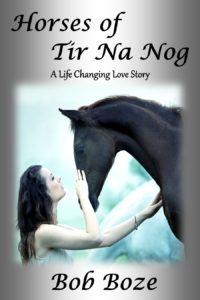
***
In Light My Way, we’ve placed our names at the top. But that’s not what your eye is drawn to. No, it’s the bright sun in the background, followed by the title. This is helped by reducing the font for our names and increasing the title font size.
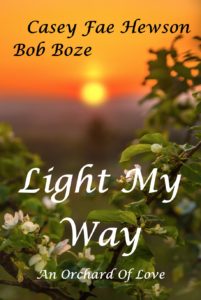
Finally, at the bottom, we’ve added a subtitle to explain the image we’ve chosen. And that the story centers around an apple orchard. Actually, two apple orchards.
***
Finally, we have The Beach Pool.
Once again, I’ve followed the current trend of the author’s name at the top. However, this had more to do with balancing the cover than anything else.
After multiple tries of moving the title and my name around, this provided the best balance and seemed to equally draw your eye to my name, then quickly lead you to the title and image.
This cover, perhaps more than the others, relies on the subtitle to help tie the title and image together and, at the same time, raises the question: What is this story about?
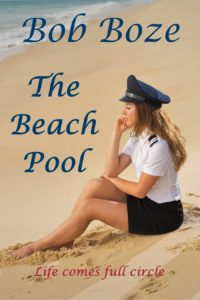
The story follows a young woman who meets a boy at the beach pool and ends when they reunite at the beach pool years later.
***
So, what are we working on now?
We’ll give you a hint.
Move over Tom Hanks Cruise and watch out Top Gun!

Please note – the release of this story is delayed until Robyn finishes her flying lessons.
Yip, I’m in the back seat. Hey! … There is no back seat!
***
Whether your designing your own cover or having it done by someone else, check to make sure it is:
Attractive
Balanced
Attracts attention
Pleasing to the eye
Not overly complex
Colors contrast
The title hints at what your story is about
The image fits and with your title tells your story
The subtitle or tag line helps clarify your story
Everything pulls your eye where you want it to, in the order you want it to
The overall cover leaves you wanting to know more about the story
Robert Boze
Mar 30, 2020 | Expert, Uncategorized
As professional editors and writers, Robyn and I have attended many conferences and writer events. Those, combined with the wide variety of edits we’ve done, have shown that many writers, especially first-time writers, have little experience with editing.
Questions we often hear are:
- Why do I need an editor?
- What is an editor going to do that I can’t do?
- What is a developmental edit?
- I have spell check, why do I need an edit?
- Why are there so many types of editing?
- What is proofreading?
- Why is editing so expensive?
And on and on and on.
In response, we’ve tried to address as many of these questions as possible in our Editing Untangled Workshop and related blogs.
***
Just as important, however, is understanding the overall editing process – the sequence in which each edit step is performed and what it is intended to accomplish.
In this blog we’ll briefly talk about each of the editing steps, when it should take place in the editing process and why. We’ll also explain what happens if it is performed out of sequence.
Some of the things we include may not normally be considered as part of the editing process but in fact, they are. For example, lets start with beta reading.
Beta Reading
For many authors, beta reading is not normally considered to be a part of the editing process, but it is. It’s actually a very important part of the editing process.
Beta readers can come in many forms: friends, family, a writing partner, a critique partner or a critique group. In short, anyone who you can get to read your work, at any stage that makes sense, and someone who will give you honest feedback.
(We should mention that you’ll hear terms like, alpha readers, review groups, beta critique groups and on and on. To us, whatever you call them, beta readers are simply the first to read your work before it is edited.)
Typically, there are no rules as to when beta reading can be done. It’s whatever you and your beta readers agree on and can start at any point in your writing.
For example, when Bob was writing his first book, he formed a beta reading group, consisting of four to five friends, who met at his house every Sunday morning for coffee and ice cream. (Yes, bribery plays a big role. Especially if your writing sucks: Which it will until your beta readers steer your story in the right direction.)
The first Sunday meeting was to agree on the rules and find out what flavor ice cream everyone liked. Then, once he had written several chapters, he passed them out at the next meeting. (Yes, the ice cream came with no obligations for this meeting.) From then on, each Sunday everyone would tell him how wonderful his writing was. (He wishes.)

Beta Read Meeting in Progress
Actually, the comments were more like: “Your hero fireman Shawn is the biggest woose I’ve ever seen.”, “Get real! No woman would ever let him jump her bones that fast.”, “It’s obvious you know nothing about horses. You’ve got her getting on the wrong side of the horse.” (Uh, there’s a right side and a wrong side???)
And on and on it went. While they read the next several chapters, Bob fixed the ones from the previous Sunday; after wiping the ice cream stains off their notes.
Two rules about beta reading that we think are important:
- You should never have to pay beta readers. Bribery is okay but pay is not.
- Beta readers should be reading the story for content only, not checking grammar, spelling, punctuation or formatting. Why? Because they’re not editors. Also, your story is raw, and while they’re reading the next part, you should be fixing what they just tore apart. So, all that effort is just a waste of time.
The key things you’re testing here are reader appeal and does your overall story make sense.
Developmental Edit
Similar to beta reading, developmental editing deals primarily with the story and its structure. It is a professional review of your overall story for structure, plot development, character development, scene descriptions, dialogue and other story elements that you’ve used to bring your story to life.
Obviously, developmental editing cannot be done until your story is complete. It also should be done by a professional editor, or at least someone who understands story structure and the role each story element plays.
Simply put, developmental editing concentrates on helping you develop and keep true your story, your characters and your scenes.
When we do a developmental edit we work with the author to provide guidance and feedback by critiquing the following areas:
- Structure
- Characterization/character arcs
- Goals, motivation, conflict
- Correct point of view
- Show don’t tell
- Plot
- Pace
- Genre specific and appropriate form
- Believable and genre specific dialog
- Balance between narrative and dialog
- Scene descriptions
Depending on how solid the story is, some line editing can be combined with a developmental edit. However, it makes no sense to do line editing on a story that’s been kicked back to the author for major rewrites.

If your story looks like this, it’s not ready for a line edit
Line or Copy Edit
If you’ve been following our blogs, you know that a copy or line edit is performed on what the writer believes to be a completed manuscript and is a line-by-line check of the author’s work.
Line editing can be light, medium or heavy, depending on what state the manuscript is in. A clean self-edited manuscript would likely need only a light line edit. Whereas a manuscript the writer is uncomfortable with will need a deeper, heavy line edit to help finish developing the story as well as fixing things.
Typically, a medium line edit, and its depth, will fall somewhere in between, depending on what the editor finds during their initial manuscript evaluation.
Things the editor will make sure are correct and proper for each type of line edit are:
- Light
- Spelling
- Punctuation
- Grammar
- Capitalization
- Number usage
- Abbreviations
- Typographical errors
- Omitted or repeat words
- Overall story accuracy
- Medium – A light edit plus:
- Consistency of American or British English, colloquialisms, accents
- Sentence construction and run on sentences
- Elimination of unnecessary words
- Syntax
- Proper and consistent tense
- Overused words and adverbs, clichés, purple prose
- Logic or plot holes
- Character/time inconsistencies
- Style sheet/guide adherence (if applicable)
- Heavy or Full – A light edit, necessary elements from a medium edit and suggestions for:
- Cuts
- Additions
- Rewrites
- Revisions to unclear passages
- Replacement words
- Rearranged sentences and scenes
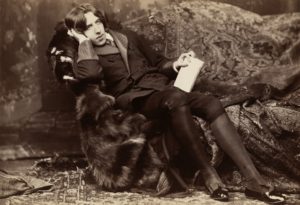
Still not sure?
Here again it makes no sense to do a line edit on a manuscript that is not complete. Even in a heavy edit, it’s not the overall story that’s being changed, but parts of it being brought into line or clarified. Also, after each part is changed, the editor will check it for all the elements of a light and medium edit.
The point being that, once again, it makes no sense to perform a light or medium line edit on a changing story line.
Proofreads
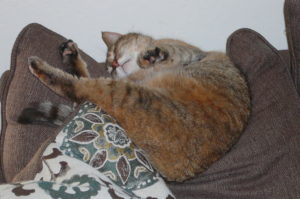
Once the editing is done, it’s time for you to relax and let us do a proofread.
Proofreading is the final review on your completely edited manuscript. You know, the one you’ve hashed over, revised and tweaked on just about every page.
And, because of the changes, we need to go back and check for:
- Typographical errors
- Punctuation
- Grammar
- Spacing
- Print quality and font consistency
- Sufficient white space – margins, paragraph spacing, indenting.
It’s the final check to make sure your manuscript’s completely error-free and print ready.
Summary
So, why are we harping on this when most of it has been in our blogs and, by now, we’re quite sure you’re tired of hearing it?
Because our next edit request may likely be someone who wants us to proofread their manuscript while it’s being line edited. That way, they can save time.
Or, they’re still not happy with their story but they want us to do a line edit so they can see what type of errors they’re making.
Or, they want to know which of the following punctuation is correct.
- Oh no you don’t!
- Oh, no you don’t!
- Oh no, you don’t!
(Hint – They’re all correct. But without knowing the context it’s being used in, it’s impossible to say which one they should use.)
Or, the author wants us to do all the edits at once because they want to enter their story in a contest – next week.
These are the types of requests we get. And while we do our best to explain that doing things out of sequence often negates the purpose of the edit, we’ll continue to try work with you and help you stay within the edit process as best we can.
***
So, what should you the author do? Simple, take a few minutes to understand each of the steps in the edit process and try, as best you can, to have them done in the proper sequence.
Not sure of what kind of repeat errors you might be making or what kind of edit(s) your work needs? Ask us to have a look and do a sample edit. Unsure of something like the above “Oh no you don’t!” example? Give us a shout out and we’ll try and help put you on the right path.
Finally, while we’ve pulled off a few miracle edits recently, please allow us enough time to do a proper edit, especially if you’re a first-time author. It’s always our goal to make everything we touch the best it can possibly be! But that takes time.
Happy writing,
The Writing Allsorts Team
Bob and Robyn
***
Bob Boze lives in the South Bay area of San Diego and his writing partner, Robyn Bennett, lives in Blenheim on New Zealand’s South Island. Both are members of the San Diego Writers and Editors Guild, Romance Writers of America and New Zealand, as well published romance and non-fiction authors, editors, speakers and bloggers. Together they have over twelve published works and are collaborating on several more novels, short stories, articles and other works.
Bob and Robyn also offer a variety of writer and business services through their business website, Writing Allsorts. To learn more about them, their published works and the services they offer, go to https://writingallsorts.com/
Mar 2, 2020 | Expert
Yip, over here!

Yeah… you with the notebook, pencils and pens. And your buddy there with the laptop too.
So, you’re an aspiring writer? And your friend there actually has published some stuff. Great! Then, don’t you think it’d be a good idea to attend the Dublin Writers festival?
What do you mean… why?

Oh lord, didn’t your parents ever let you out? Expose you to the world?
Therein lies the first and foremost reason why you should attend the Dublin Writers Festival:
To be exposed to the world of writing. All of it.
To learn how to form your story.
To enhance your story and make your manuscript perfect.
To give you the tools to help decide how much or how little you want to do.
To purchase or make your cover and exterior as attractive as possible.
To market it yourself or meet the best someone to do it for you.
To learn from the best, no matter which way you choose to go.
And, let us not forget Dublin. You know, the World Heritage City, home to some of the most famous writers in history. Not to mention some of the friendliest people you’ll ever meet. And then there’s the fantastic pubs… the step dancers and… Oops, sorry.
Back to the festival.
One of the first things that will become apparent is the rapidly changing world of writing. Not just in ways to write but understanding and finding:
beta readers
editing and editors
cover designers
new genre’s
publishing options,
large print
graphic novels
audio books
screen plays
and on, and on, and on

And yes, it’s all here, under one roof, at The Dublin Writers Festival.
Most importantly though, it’s presented by people who not only know and understand each topic, but love sharing their knowledge. Plus, they have all been where you are. They know how confusing even the writing part can be. So, they’ve taken care to use their expertise to explain all the things you suddenly discovered you need to know.
Yeah, bet you thought the writing was the hard part. No way! Getting your story down was the part you at least knew how to start. Now comes making it attractive and appealing to others. Then there’s getting it into some form where others can read or listen to it. Oh yeah, and then letting people know it’s there.
Sound overwhelming?
It’s not. Once you know what you’re doing or how to find the right someone who does.
So, come to the festival. Meet the experts and let them help make your work shine and be the best that it can be. Trust us, we’ve been where you are, and you’ll not find a better festival or conference or more qualified presenters to help you learn.
***

Questions? Sure, send them on.
We’ll even give you directions to the Writers Museum or help you find the best pub!
Bob Boze lives in the south bay area of San Diego and his writing partner, Robyn Bennett, lives in Blenheim, on the south island of New Zealand. They are both published romance and non-fiction authors, editors, speakers and bloggers.
They offer a variety of writer and business services through their business website, Writing Allsorts. To find out more about the services they offer, go to https://writingallsorts.com/ and follow the links to their web sites to learn more about their books.
Something in particular you’d like to know about? We speak, write and do workshops on a ton of writing and business stuff. (Well, okay not a ton but a lot.) Just let us know. If it’s about social media or internet advertising or marketing, we’ll steer you to Laurence at BooksGoSocial, our expert. Anything else is fair game.
Keith Deininger
Jan 23, 2020 | Advice for Writers, Expert, Horror
As horror writers, we’re used to killing characters. After all, what’s more horrific than being killed? However, the trick with writing horror, and all fiction for that matter, is knowing when NOT to kill a character.
1. It Distracts from Your Narrative
Time-honored advice tells us to “kill our darlings.” While this advice is used typically to highlight those moments when it’s best for the narrative to remove a scene, plot device, or (as is often the case with my own writing) lovingly crafted descriptions (Purple prose? Bah. I’ll show you purple…), it’s also important to realize this fact applies to characters as well.
As such, it’s often best not to go on a killing spree. Well, unless that’s the type of fiction you’re writing. But, even then, it’s best to wait for the right moment.
In fact, as a horror writer, it may be that the act of killing a character is your “darling,” but since the best thing for the narrative is to not kill, you should NOT do it. Resist your writerly bloodlust and focus on the story. Your narrative will thank you, not to mention your characters.
2. Killing Them Serves No Purpose
Similar to distracting from your narrative, you should never kill a character if it doesn’t serve a purpose. Pointless death is just that…pointless.
It’s become a fad in recent years to introduce a main character and then kill them off purely for shock value. Thing is, this technique can often backfire and blow up in your face, killing any chance you have of your readers finishing your book.
When you do kill a character, it needs to be for a significant reason. It can still be shocking, but it also should drive the story, such as to show an antagonist's power or to serve as motivation for revenge.
For instance, George R. R. Martin (shoutout to a fellow New Mexico author!) is famous for brutally killing a number of main characters in his A Song of Ice and Fire series. However, each death progresses the plot, either as villainy or consequence.
3. They’re Not Going to Stay Dead
I mean, as horror writers, we all know necromancy is a thing. Sometimes they come back, and all that jazz. However, if you build a world where your main characters can be raised from the dead, their deaths become meaningless.
In fantasy fiction, writers go to great lengths to create magic systems with very specific rules and consequences, and bringing people back from the dead is a messy business. It can make a magic system seem too powerful and strip your narrative of tension, and without tension, what do you have? Well, it’s not a good story, I can tell you that much.
What’s more, if you suddenly raise a character from the dead without having first set up the possibility, you’re diving deep into the realm of deus ex machina. That is, wrapping up a story through a randomly convenient device.
With this in mind, it’s recommended you only play with such dark, necromantic forces when it’s important to your plot, such as the zombie apocalypse. Although, it can also be used thematically, such as the Christian symbolism of Aslan in The Chronicles of Narnia, or as a selective force that generally does not benefit characters, such as in A Song of Ice and Fire (the books, not the show. Don’t get me started on the show… I… Mm, will stop right there…).
4. They’re An Insignificant Character
Look, I understand we’re largely talking about horror here, but when somehow your main character finds themselves wandering a dark hallway with another character we hardly know, while the killer lurks in the shadows, it’s pretty obvious what you’re setting up. Inevitably, when the killer jumps out and stabs the random character through his eye, allowing your main character to escape to fight another day, it doesn’t mean very much. We all saw it coming from across the stratosphere.
This is often called the ‘Red Shirt’ trope, referring to the insignificant officers in Star Trek that are introduced on away missions only to serve as cannon fodder later on in the episode. While this may serve to show us the threat our main characters are facing, we really don’t give a flying flapjack whether or not the red shirt lives or dies.
When tempted, it’s important to remember that death doesn’t just happen to minor officers or tertiary characters. Use this trope too much and your readers will begin to think your main characters are safe, maybe even immortal. This, just like raising people from the dead, has a decidedly adverse effect on a story’s tension.
Nevertheless, this does not mean you can’t kill minor characters, only that they should not be the only ones who die. Again, think about Martin’s work, no one is safe and his storytelling is brilliant for it.
However, there is one caveat I’d like to mention while we’re here. That is, don’t go overboard either. How many of us stopped watching The Walking Dead after so-and-so was killed? If you wipe out all of your good characters, there’s really no point in continuing the story, is there?
5. The Character is a Minority
Finally, we come to this one. Although this could be considered a controversial subject, let’s dive in anyway…
Diversity in fiction is a hot topic (in fact, it deserves its own post, which could be my next article). After all, a large majority of writers are white and straight. Mostly, this is due to cultural availability, as being an author is one of those paths that is encouraged mostly for middle-class white people (I know it was for me, although my parents were clear it was supposed to be a hobby and not a career). However, there is a dangerous precedent that has been set where the minority character is always killed, often early in the narrative.
It may be the token black character (a trope that’s even become a joke at this point), someone from the LGBTQIA+ community, or even a stereotypical female character, but whoever it is, resist the urge to kill them unless you are absolutely sure it serves the story.
Many authors introduce minority characters in order to give them some sort of background as quickly as possible. Then, they can elicit a larger emotional response when they are killed off. The problem with this is that it adds to an insidious pattern of prejudice, whether sexism, racism, or the Bury Your Gays trope.
My point is, while minority characters should certainly be more prevalent in fiction, as they are, after all, a big part of the real world, they should not be used as a cheap plot device. Take note and be aware of this fact. That is all.
Death is a Part of Life, But…
Remember, you are an indentured servant to your story. Whenever your story (not you!) kills a character, it should leave an emotional impact and move the plot forward. Death is a part of life, but take the time to think about the implications of your murderous ways and be sure to always spill blood with class and purpose.
 Keith Deininger is the award-winning and #1 Amazon bestselling author of many horror and fantasy titles, including WITHIN, THE FEVER TRILOGY, and THE GODGAME series. He has been called “one of the finest writers of imaginative fiction” and “Ray Bradbury on acid.” His latest novel, VIOLENT HEARTS, has been compared to Stephen King’s fantasy-based work. He lives in Albuquerque, NM with his wife and kids. Although he loves a good nightmare, in person he’s a really nice guy. Promise.
Keith Deininger is the award-winning and #1 Amazon bestselling author of many horror and fantasy titles, including WITHIN, THE FEVER TRILOGY, and THE GODGAME series. He has been called “one of the finest writers of imaginative fiction” and “Ray Bradbury on acid.” His latest novel, VIOLENT HEARTS, has been compared to Stephen King’s fantasy-based work. He lives in Albuquerque, NM with his wife and kids. Although he loves a good nightmare, in person he’s a really nice guy. Promise.
Keith’s personal site: www.KeithDeininger.com
Keith’s SEO content and editing company: www.MeridianPublications.com
Jan 1, 2020 | 1st pages, Expert
Editing Untangled Workshop
Happy new Year Everyone.
Robyn and I are privileged to have been selected to do our Editing Untangled Workshop at this year’s Dublin Writers Conference.
 So, what’s so special about our workshop you ask?
So, what’s so special about our workshop you ask?
Let’s start with the fact that it’s tailored to you, the writer.
As professional editors and writers we’ve attended many conferences and writer events. Those, combined with the wide variety of edits we’ve done, have shown that many writers, especially first time writers, have little experience with editing.
Questions we often hear are:
- Why do I need an editor?
- What is an editor going to do that I can’t do?
- What is a developmental edit?
- I have spell check, why do I need an edit?
- Why are there so many types of editing?
- What is proofreading?
- Why is editing so expensive?
And on and on and on.

Based on our observations and discussions with other writers,
we’ve designed our workshop to try and address as many of these issues as time permits.
***
We’ll begin with a very brief introduction of who we are, our backgrounds and experience.
Then we will tell you our opinion of:
- the purpose of editing
- why you need an editor
- what an editor should do
- what an editor should not do.
And our counter as to why writers think they don’t need an editor.
Next up we’ll very briefly cover the different types of editing. Here we’ll explain the typical status of a manuscript that each applies to and the type of things (listed below) we look for in each.
Developmental Editing – where we work with the author to provide guidance and feedback by critiquing the following areas:
- Structure
- Characterization/character arc
- Goals, motivation, conflict
- Correct point of view
- Show don’t tell
- Plot
- Pace
- Genre specific and appropriate form
- Believable and genre specific dialog
- Balance between narrative and dialog
- Scene descriptions
- Provide templates and checklist as requested or needed
Copy or Line Editing – Copy editing can be light, medium or heavy. Things we will make sure are correct and proper are:
- Light
- Spelling
- Punctuation
- Grammar
- Capitalization
- Number usage
- Abbreviations
- Typographical errors
- Omitted or repeat words
- Overall story accuracy
- Medium
- Consistency of American or British English, colloquialisms, accents
- Sentence construction and run on sentences
- Elimination of unnecessary words
- Syntax
- Proper and consistent tense
- Over used words and adverbs, clichés, purple prose
- Logic or plot holes
- Character/time inconsistences
- Style sheet/guide adherence (if applicable)
- Heavy or Full – Suggestions for:
- Cuts
- Additions
- Rewrites
- Revisions to unclear passages
- Replacement words
- Rearranged sentences and scenes
Proofreading – The final review on a completely edited manuscript will check for:
- Typographical errors
- Punctuation
- Grammar
- Spacing
- Print quality and font consistency
- Sufficient white space – margins, paragraph spacing, indenting.
Other types of Edits such as Substantive or Content Edit and Production Edit will not be covered.
***

But wait!
The next section in our workshop will cover what we believe are the three most important, yet misunderstood and misused, tools in an author’s toolbox.
- Show don’t tell
- Treating your scenes as you would a character
- Using dialogue to enhance your story
This is likely where we’ll spend as much time as we can.
Why? Because these three areas will likely enhance your story the most with often simple changes or additions.
***
Finally, we’ll close with:
- Some tricks to use when self-editing
- Tips on how to choose an editor
***
If you plan to attend the conference, jot down any questions you might have and we’ll try and cover as many as we can, time permitting. Otherwise, email them to us and we’ll be happy to answer them as soon as we can.
***
Bob Boze lives in the south bay area of San Diego and his writing partner, Robyn Bennett, lives in Blenheim, on the south island of New Zealand. They are both published romance and non-fiction authors, editors, speakers and bloggers.
They offer a variety of writer and business services through their business website, Writing Allsorts. To find out more about the services they offer, go to https://writingallsorts.com/ and follow the links to their web sites to learn more about their books.
Something in particular you’d like to know about? We speak, write and do workshops on a ton of writing and business stuff. (Well, okay not a ton but a lot.) Just let us know. If it’s about social media or internet advertising or marketing, we’ll steer you to Laurence at BooksGoSocial, our expert. Anything else is fair game.
















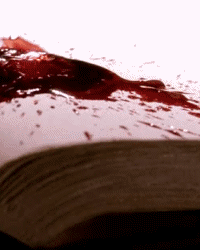
 Keith Deininger is the award-winning and #1 Amazon bestselling author of many horror and fantasy titles, including
Keith Deininger is the award-winning and #1 Amazon bestselling author of many horror and fantasy titles, including 
 So, what’s so special about our workshop you ask?
So, what’s so special about our workshop you ask?


